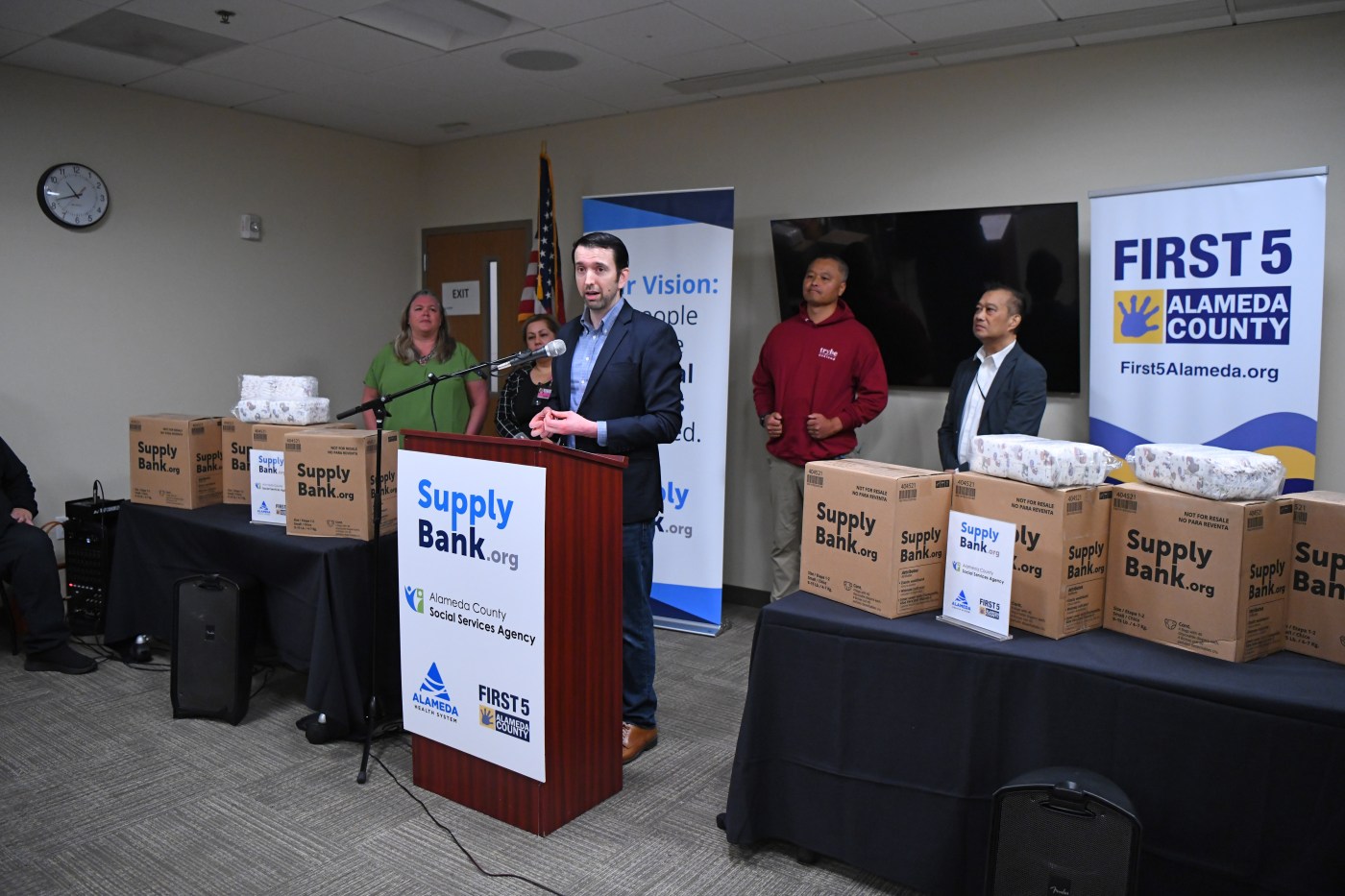With the help of local nonprofits, a $5.8 million Alameda County initiative will provide 15 million diapers and 37 million baby wipes at dozens of sites over the next three years in an effort that leaders have described as “one of the largest” diaper banks in the country to address skyrocketing childcare costs.
“The cost of diapers has increased substantially more than the inflation that we’ve had over the last several years,” said Benito Delgado-Olsen, executive director of the Oakland nonprofit SupplyBank, which announced the initiative with Alameda County and First 5 at the Wilma Chan Highland Hospital Campus on Monday. “$100 a month if you’re on public assistance is very substantial.”
The success of several pilot programs in recent years has led to the program’s expansion, where community-based organizations like SupplyBank and First 5 will distribute diapers and wipes at family resource centers, libraries, WIC centers, school districts, health clinics and hospitals. Estimates from First 5 suggest that 10,000 Alameda County families could receive assistance through the program over the next three years. It is expected to be fully operational in the coming months.
“In 2015, we started to lean into diapers – just recognize them as part of the high cost of living in the Bay Area,” said Kristin Spanos, CEO of First 5 Alameda County. “With COVID, the needs just escalated, and we had situations where people were out in the rain at seven in the morning to get diapers.”
The average cost to raise an infant in the Bay Area’s largest cities is approximately $25,000, according to the real estate brokerage resource company Redfin. This includes $7,850 per year on items like clothes and diapers.
The cost of diapers has grown drastically, rising 35% since 2019, according to the National Diaper Bank Network, a nonprofit dedicated to providing diaper access to low-income families. The organization estimates that roughly one in two families with infants or toddlers in the United States struggles to afford enough diapers.
According to First 5 Alameda County, diapers have grown to represent the fourth-largest expense following rent, food and transportation for families who receive public benefits such as MediCal or CalFresh.
Alameda County Supervisor Lena Tam said the challenges to access diapers among low-income families represent more than a strain on their finances; it represents a public health issue that results in approximately 40,000 annual visits to California hospitals, as much as 80% of which are to an emergency room.
“Emergency rooms and urgent care are not the solution to diaper needs,” Tam said.
The long-term investment by the county will shield low-income families from having resources pulled back during the boom and bust periods of the state’s budget, Delgado-Olsen said. By providing comprehensive services at a variety of sites, low-income families will have a better opportunity to remain in the East Bay.
“It’s a big affordability crisis,” Delgado-Olsen said. “But this is a very sophisticated solution that will (provide) very easy access for families that are rolled into these different programs all across the county.”





